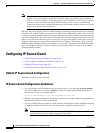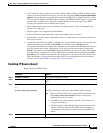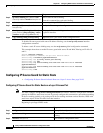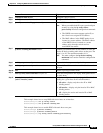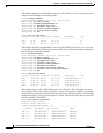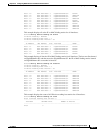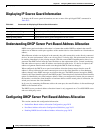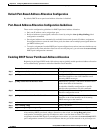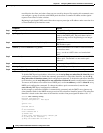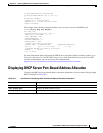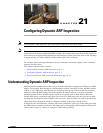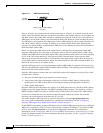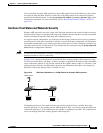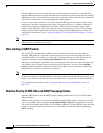
20-23
Catalyst 2960 and 2960-S Switch Software Configuration Guide
OL-8603-09
Chapter 20 Configuring DHCP Features and IP Source Guard Features
Configuring DHCP Server Port-Based Address Allocation
Default Port-Based Address Allocation Configuration
By default, DHCP server port-based address allocation is disabled.
Port-Based Address Allocation Configuration Guidelines
These are the configuration guidelines for DHCP port-based address allocation:
• Only one IP address can be assigned per port.
• Reserved addresses (preassigned) cannot be cleared by using the clear ip dhcp binding global
configuration command.
• Preassigned addresses are automatically excluded from normal dynamic IP address assignment.
Preassigned addresses cannot be used in host pools, but there can be multiple preassigned addresses
per DHCP address pool.
• To restrict assignments from the DHCP pool to preconfigured reservations (unreserved addresses are
not offered to the client and other clients are not served by the pool), you can enter the reserved-only
DHCP pool configuration command.
Enabling DHCP Server Port-Based Address Allocation
Beginning in privileged EXEC mode, follow these steps to globally enable port-based address allocation
and to automatically generate a subscriber identifier on an interface.
After enabling DHCP port-based address allocation on the switch, use the ip dhcp pool global
configuration command to preassign IP addresses and to associate them to clients. To restrict
assignments from the DHCP pool to preconfigured reservations, you can enter the reserved-only DHCP
pool configuration command. Unreserved addresses that are part of the network or on pool ranges are
Command Purpose
Step 1
configure terminal Enter global configuration mode.
Step 2
ip dhcp use subscriber-id client-id Configure the DHCP server to globally use the
subscriber identifier as the client identifier on all
incoming DHCP messages.
Step 3
ip dhcp subscriber-id interface-name Automatically generate a subscriber identifier based
on the short name of the interface.
A subscriber identifier configured on a specific
interface takes precedence over this command.
Step 4
interface interface-id Specify the interface to be configured, and enter
interface configuration mode.
Step 5
ip dhcp server use subscriber-id client-id Configure the DHCP server to use the subscriber
identifier as the client identifier on all incoming
DHCP messages on the interface.
Step 6
end Return to privileged EXEC mode.
Step 7
show running config Verify your entries.
Step 8
copy running-config startup-config (Optional) Save your entries in the configuration file.




